Mulesoft MCD-Level 1 MuleSoft Certified Developer – Level 1 (Mule 4) Online Training
Mulesoft MCD-Level 1 Online Training
The questions for MCD-Level 1 were last updated at Apr 01,2025.
- Exam Code: MCD-Level 1
- Exam Name: MuleSoft Certified Developer - Level 1 (Mule 4)
- Certification Provider: Mulesoft
- Latest update: Apr 01,2025
Refer to the exhibit.
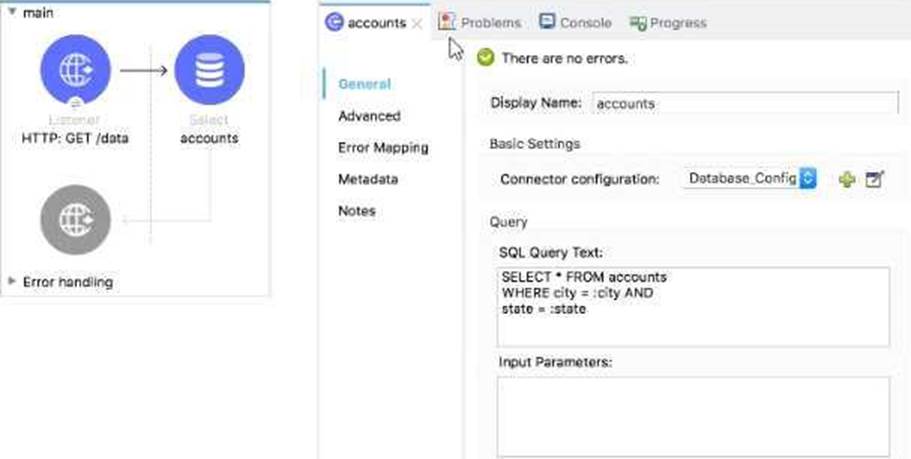
What expression correctly specifies input parameters to pass the city and state values to the SQL query?
A)
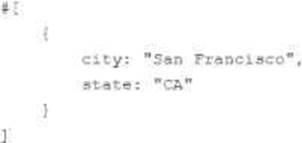
B)
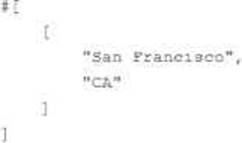
C)
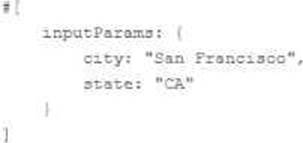
D)
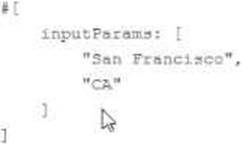
- A . Option A
- B . Option B
- C . Option C
- D . Option D
A
Explanation:
MuleSoft Documentation
Reference: https://docs.mulesoft.com/db-connector/1.9/database-connector-select
A Mule flow has three Set Variable transformers.
What global data structure can be used to access the variables?
- A . Mule event attributes
- B . Mule event message
- C . Mule application properties
- D . Mule event
D
Explanation:
Mule event is correct answer. Mule event has two parts which are as follows
1) Message (which contains payload and attributes like headers and query/uri parameters
2) Variables
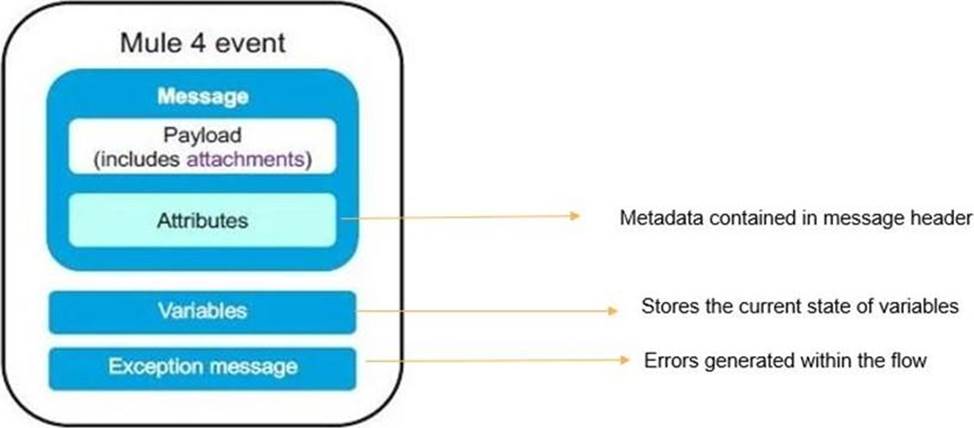
In an application network.
If the implementation but not the interface of a product API changes, what needs to be done to the other APIs that consume the product API?
- A . The applications associated with the other APIs must be restarted
- B . The applications associated with the other APIs must be recoded
- C . The other APIs must be updated to consume the updated product API
- D . Nothing needs to be changed in the other APIs or their associated applications
D
Explanation:
Correct answer is Nothing needs to be changed in the other APIs or their associated applications This is the benefit of having separate interface layer. As there are no changes to interface, no changes are required on the API’s which consumes this API in context
Refer to the exhibit.
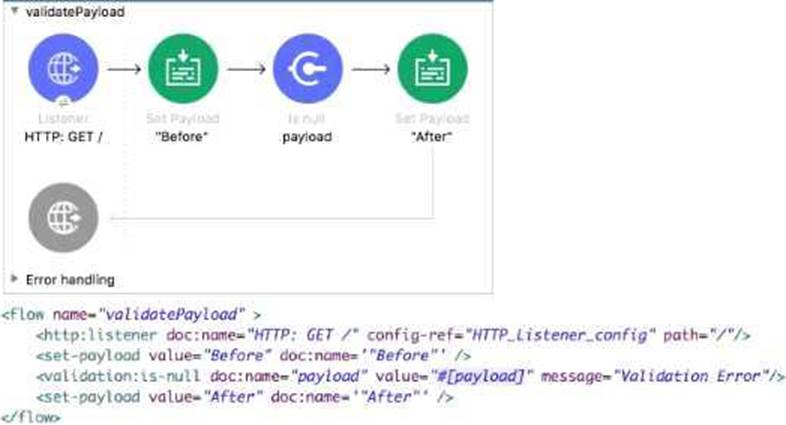
What is the response to a web client request to http://localhost:8081?
- A . After
- B . before
- C . Validation Error
- D . null
C
Explanation:
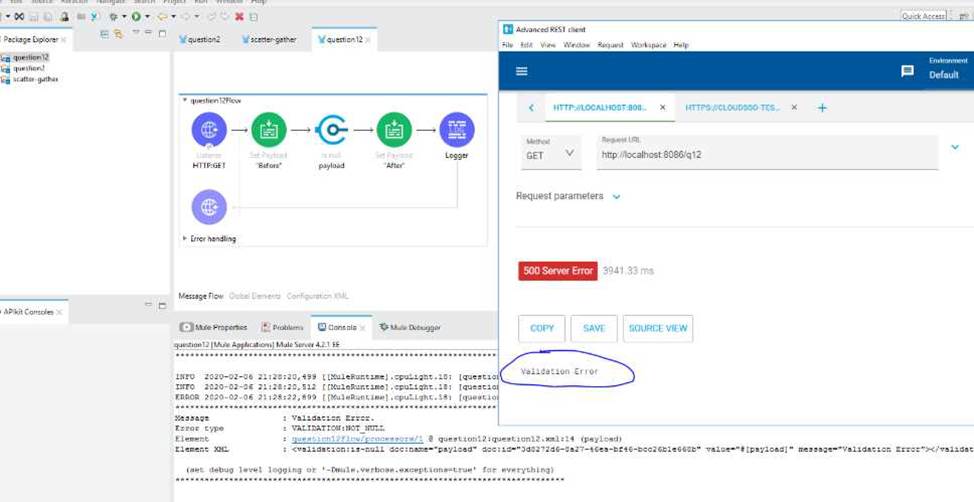
Refer to the exhibits.
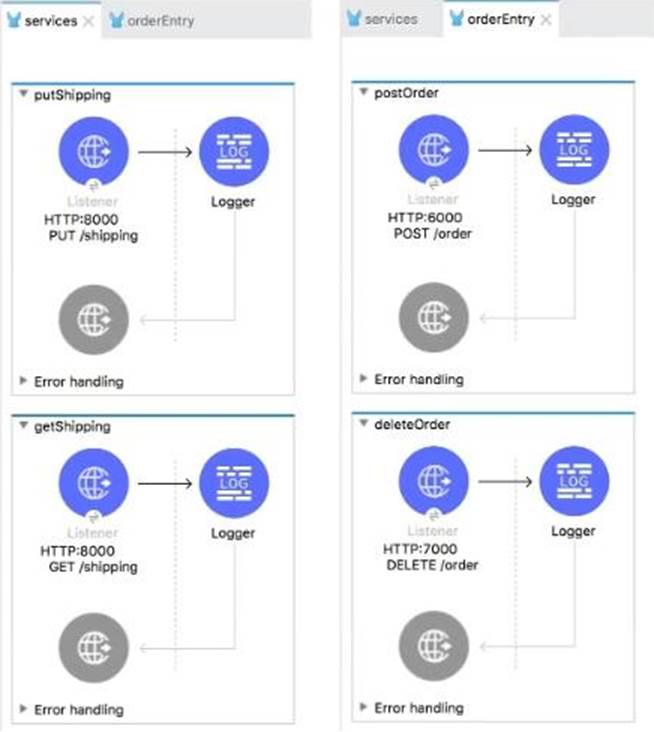
The two Mule configuration files belong to the same Mule project. Each HTTP Listener is configured with the same host string and the port number, path, and operation values are shown in the display names.
What is the minimum number of global elements that must be defined to support all these HTTP Listeners?
- A . 1
- B . 2
- C . 3
- D . 4
C
Explanation:
In this case three configurations will be required each for port 8000, 6000 and 7000.
There would be three global elements defined for HTTP connections.
Each HTTP connection will have host and port. One example shown below with host as localhost and port 6000
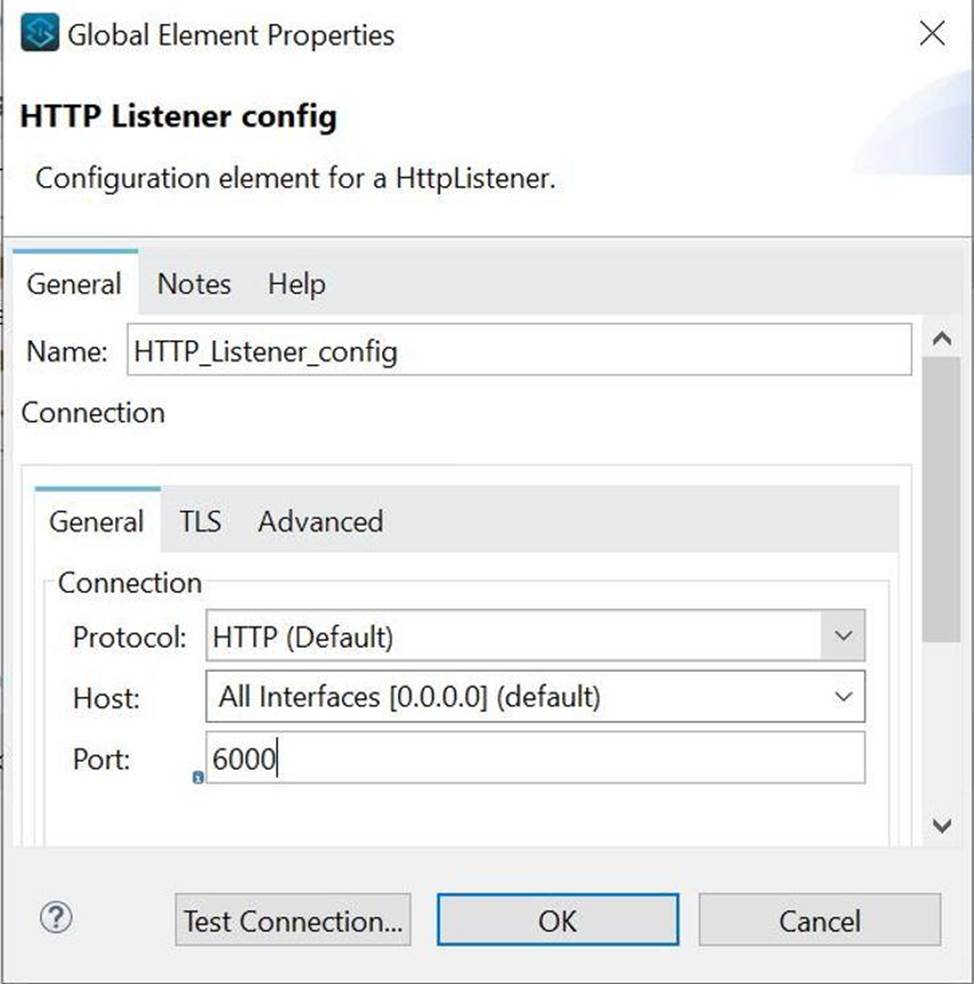
To use an HTTP listener, you need to declare a configuration with a corresponding connection. This declaration establishes the HTTP server that will listen to requests.
Additionally, you can configure a base path that applies to all listeners using the configuration. <http:listener-config name="HTTP_Listener_config" basePath="api/v1"> <http:listener-connection host="0.0.0.0" port="8081" />
</http:listener-config>
https://docs.mulesoft.com/http-connector/1.6/http-listener-ref#http-listener-configuration
Refer to the exhibits.
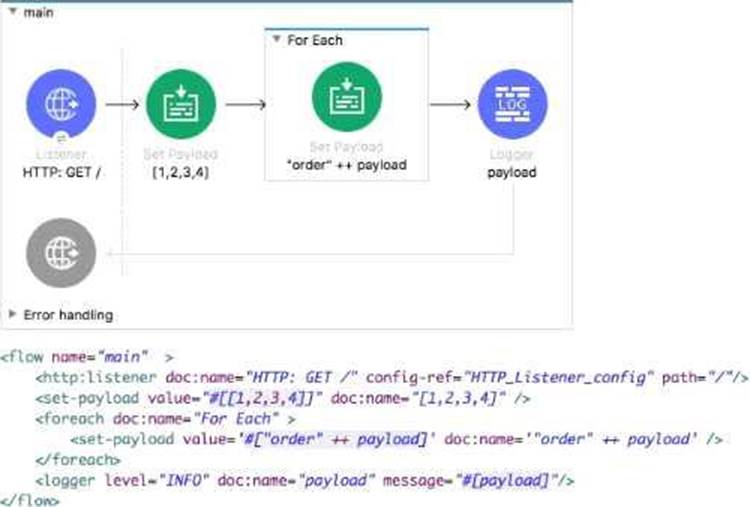
What payload is logged at the end of the main flow?
- A . [order1, order2, order3, order4]
- B . [1, 2, 3, 4]
- C . order4
- D . order1order2order3order4
B
Explanation:
For Each Scope
The For Each scope splits a payload into elements and processes them one by one through the components that you place in the scope. It is similar to a for-each/for loop code block in most programming languages and can process any collection, including lists and arrays. The collection can be any supported content type, such as application/json, application/java, or application/xml. General considerations about the For Each scope:
By default, For Each tries to split the payload. If the payload is a simple Java collection, the For Each scope can split it without any configuration. The payload inside the For Each scope is each of the split elements. Attributes within the original message are ignored because they are related to the entire message.
For Each does not modify the current payload. The output payload is the same as the input.
Mule Doc Reference: https://docs.mulesoft.com/mule-runtime/4.3/for-each-scope-concept
Refer to the exhibit.
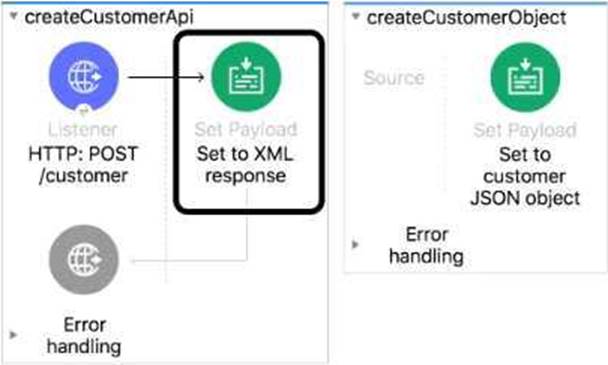
What is the correct DataWeave expression for the Set Payload transformer to call the createCustomerObject flow with values for the first and last names of a new customer?
- A . lookupC createCustomerObJect( "Alice", "Green- ) )
- B . createCustomerObject( { first: "Alice", last: "Green" > )
- C . lookupf "createCustomerObject", { first: "Alice", last: "Green" > )
- D . createCustomerObject( "Alice", "Green")
C
Explanation:
lookup(String, Any, Number)
This function enables you to execute a flow within a Mule app and retrieve the resulting payload.
It works in Mule apps that are running on Mule Runtime version 4.1.4 and later.
Similar to the Flow Reference component (recommended), the lookup function enables you to execute another flow within your app and to retrieve the resulting payload. It takes the flow’s name and an input payload as parameters. For example, lookup("anotherFlow", payload) executes a flow named anotherFlow. Correct answer is
lookup( "createCustomerObject", {first: "Aice, last: "Green"})
MuleSoft Documentation
Reference: https://docs.mulesoft.com/mule-runtime/4.3/dw-mule-functions-lookup
What is the output type of the DataWeave map operator?
- A . String
- B . Array
- C . Map
- D . Object
Refer to the exhibits.
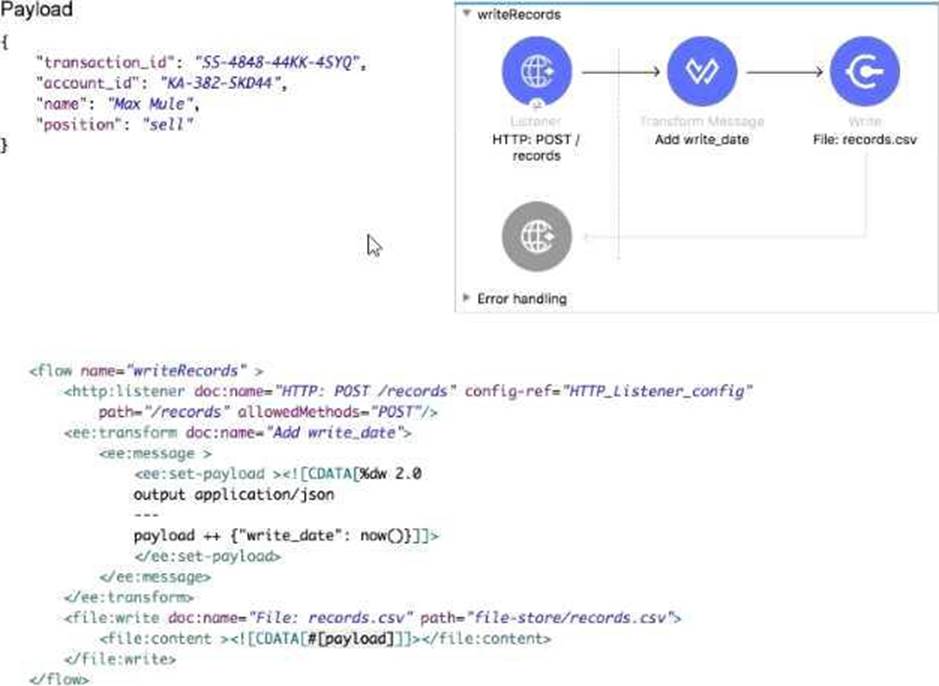
What is written to the records.csv file when the flow executes?
- A . The JSON payload
- B . An error message
- C . Nothing
- D . The payload convert to CVS
A
Explanation:
Transform Message Add write_date is coverting payload in JSON format and same JSON payload is avaialble to file write processor. However, if the payload is a different format (for example, not CSV), you can place the transformation inside the Write operation to generate content that will be written without producing a side effect on the message in transit. This is not done in this case. By default, the connector writes whatever is in the message payload. Hence JSON payload will be written to file.
Refer to the exhibit.
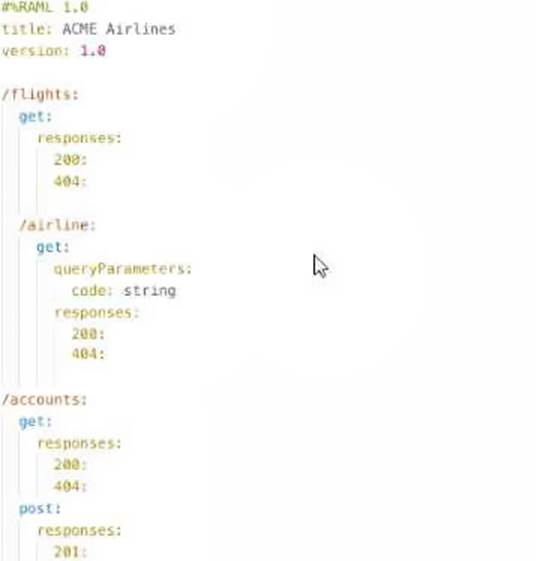
How many private flows does APIKIT generate from the RAML specification?
- A . 1
- B . 2
- C . 3
- D . 4
Latest MCD-Level 1 Dumps Valid Version with 99 Q&As
Latest And Valid Q&A | Instant Download | Once Fail, Full Refund

